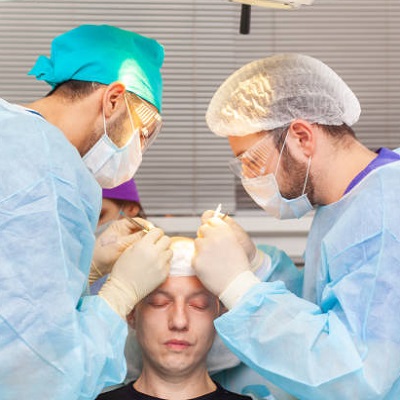Hair loss can be a challenging and emotional experience for many, leading them to explore various solutions for regaining their hair and confidence. Among these solutions, hair transplants are often considered the most effective and permanent. However, a common question arises: do hair transplants work 100%? In this blog, we will explore the efficacy of hair transplants, the factors influencing their success, and what patients can realistically expect from the procedure.
Understanding Hair Transplant Efficacy:
While hair transplants are highly effective, claiming a 100% success rate would be misleading. No medical procedure can guarantee perfect results for every patient. The success of a hair transplant in Islamabad depends on several factors, including the technique used, the surgeon's expertise, and individual patient characteristics.
Types of Hair Transplant Techniques:
- Follicular Unit Transplantation (FUT):
- Procedure: Involves removing a strip of scalp from the donor area and dissecting it into individual follicular units for transplantation.
- Success Rate: FUT generally has a high graft survival rate, often exceeding 90%. The precise handling and placement of grafts contribute to this success.
- Pros: Effective for large areas of hair loss, high-density results.
- Cons: Leaves a linear scar, longer recovery time.
- Follicular Unit Extraction (FUE):
- Procedure: Involves extracting individual hair follicles from the donor area using a punch tool and implanting them into the recipient area.
- Success Rate: FUE also has a high success rate, typically between 85% and 90%. Advanced techniques and tools have improved these outcomes.
- Pros: No linear scar, quicker recovery, suitable for shorter hairstyles.
- Cons: More time-consuming, may require multiple sessions.
- Direct Hair Implantation (DHI):
- Procedure: An advanced form of FUE that uses a Choi pen for simultaneous extraction and implantation of hair follicles.
- Success Rate: Similar to FUE, often around 90%. The Choi pen minimizes the time grafts spend outside the body, potentially increasing survival rates.
- Pros: Greater precision, higher hair density, reduced graft handling time.
- Cons: Requires a skilled surgeon, can be more expensive and time-intensive.
Factors Influencing Hair Transplant Success:
Several factors contribute to the overall success of a hair transplant:
- Surgeon’s Expertise:
- The skill and experience of the surgeon play a crucial role in the outcome. Choosing a reputable and experienced surgeon is essential for achieving the best results.
- Patient’s Health and Hair Characteristics:
- The quality and density of the donor hair, scalp condition, and overall health can impact the success of the transplant. Patients with good donor hair and healthy scalps are more likely to achieve optimal results.
- Post-Operative Care:
- Following the surgeon's post-operative care instructions is vital for ensuring graft survival and promoting healing. This includes proper washing techniques, avoiding strenuous activities, and adhering to prescribed medications.
- Realistic Expectations:
- Patients should have realistic expectations about the results. While hair transplants can significantly improve hair density and appearance, they may not completely restore the hair to its original state. Understanding the limitations and potential outcomes helps in achieving satisfaction with the results.
What to Expect from a Hair Transplant:
- Consultation:
- The process begins with a consultation where the surgeon assesses the patient's hair loss pattern, discusses goals, and plans the procedure. This is the time to ask questions and set realistic expectations.
- Surgery:
- Depending on the chosen technique, the surgery can take several hours. Local anesthesia is typically used to minimize discomfort.
- Recovery:
- Post-operative instructions are crucial for optimal healing and results. Patients may experience mild swelling and discomfort, which subsides within a few days. It is essential to follow all care guidelines provided by the surgeon.
- Results:
- New hair growth usually starts within a few months, with full results visible after 9 to 12 months. Patience is key, as hair growth occurs gradually.
Conclusion:
While hair transplants are highly effective and can provide significant improvements in hair density and appearance, they do not work 100% for every patient. Success depends on various factors, including the chosen technique, the surgeon's expertise, the patient's health, and post-operative care. By understanding these factors and maintaining realistic expectations, patients can achieve satisfying and long-lasting results from their hair transplant procedures.
Hair transplants offer a promising solution for those seeking to restore their hair and confidence. Consulting with an experienced surgeon is the first step towards understanding what is achievable and embarking on a successful hair restoration journey.





Comments